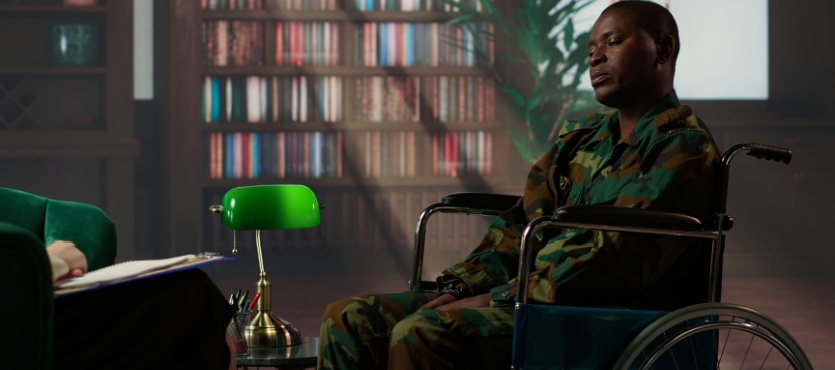We start this look at PTSD through the years with one of the most recent developments. In 2001, Canadian Forces Lieutenant Colonel Stéphane Grenier. A noted expert in the field suggested that the CAF replace the PTSD moniker with OSI (Operational Stress Injury), to avoid what he called the “stigma” of PTSD. He also intentionally chose the I-word (injury) to reflect the fact that PTSD is a physical brain injury, as real as a concussion or any other such wound. The Canadian Parliament officially adopted the change in 2016.
Although the OSI label has not spread beyond Canada, the physical nature of PTSD injuries is well established. Extreme stress, like combat stress, changes the brain’s chemical composition. The symptoms of this chemical imbalance include hypervigilance, depression, nightmares, flashbacks, and anger.
Because PTSD is a physical injury, a Defense Base Act lawyer can obtain substantial benefits for contractors who develop PTSD while deployed overseas. These benefits, which usually include lost wage replacement and medical bill payment, are available even if a pre-existing condition contributed to the injury. Benefits are also available if the incident occurred during off hours, such as a bomb in a marketplace on a quiet weekend.
In Ancient Times
Aspects of PTSD in soldiers of ancient Assyria have been identified using written sources from 1300 to 600 B.C. These Assyrian soldiers would undergo a three-year rotation of combat before being allowed to return home, and were reported to have faced immense challenges in reconciling their past actions in war with their civilian lives.
Connections between the actions of Viking berserkers and the hyperarousal of post-traumatic stress disorder have also been drawn.
Non-combat records of ancient PTSD include a surprising source. William Shakespeare’s Henry IV, Part 1 includes a soliloquy that eerily describes the symptoms of PTSD. In Act II, scene 3, Lady Percy laments the fact that her husband, Hotspur, returned from a war as an entirely different person.
“O my good lord, why are you thus alone? For what offense have I this fortnight been
a banished woman from my Harry’s bed? Tell me, sweet lord, what is ‘t that takes from thee thy stomach, pleasure, and thy golden sleep? Why dost thou bend thine eyes upon the earth, and start so often when thou sit’st alone? Why hast thou lost the fresh blood in thy cheeks and given my treasures and my rights of thee to thick-eyed musing and curst melancholy?”
American Civil War
Shakespeare wrote that play around 1597. Some 250 years later, and a half a globe away, North and South went to war over slavery and other issues. By that time, the widespread use of firearms, like rifled muskets, repeating rifles, and cannons, kicked PTSD up a notch.
But the doctors of the era, much like Lady Percy, completely misunderstood the nature of PTSD. When soldiers displayed symptoms like Hotspur’s, doctors usually diagnosed these soldiers with nostalgia, which was basically homesickness on steroids.
It gets worse. Doctors believed that vigorous offensive activity cured nostalgia. So, instead of transferring them to places where they could get rest and treatment, doctors transferred these soldiers to more active areas. If they were lucky enough to survive such additional combat, they usually did not come out of it in one piece.
Sometimes, the wound was a visible external wound, usually a missing limb or digit. Other poor Civil War soldiers were in pieces on the inside.
The World Wars
World War I was the first widespread, post-Industrial Revolution conflict. High-powered rifles had replaced muskets and cannons, with TNT had replaced cannons that fired phytic acid (a chemical similar to the chemical in fireworks). Armies also used hand grenades, machine guns, and chemical weapons.
These terrible weapons increased the severity and frequency of PTSD, a condition then known as “shell shock.” This description was nowhere near accurate, but at least doctors had connected the dots between PTSD and combat stress.
PTSD was bad enough amongst British and French soldiers. It was even worse among the Germans on the other side of the wire, especially as economic hardships worsened in the latter stages of the war.
Today, a Defense Base Act lawyer can obtain maximum benefits if a pre-existing condition, like a personality disorder, or a coexisting condition, such as substance abuse, contributes to the risk and/or severity of deployment-related PTSD.
PTSD science crept forward again during World War II, when PTSD was known as battle fatigue. Doctors connected PTSD with the stress of combat, not just with the idea of combat.
Then, as now, however, treatment lagged behind diagnosis. Most battle fatigue victims in field hospitals rested for a few hours, then went back to the front line. Similarly, modern PTSD drugs usually treat the symptoms, such as anxiety. But they do not address the chemical imbalance that causes this injury. So, in most cases, dealing with PTSD is a lifelong battle. The DBA pays for these future medical bills, as long as they are reasonably necessary.
Vietnam War and Beyond
During the Vietnam War, the PTSD clock basically stopped. Most doctors acknowledged that PTSD was some kind of brain injury, but it was a “disorder” that randomly affected some people but not others. Too many times, PTSD is equated with cowardice, which is the main reason none of the other armies in the world have made the move from PTSD to OSI.
The good news for injured contractors is that, under the Defense Base Act, they can choose their own doctors. So, an attorney can connect a PTSD victim with a doctor who understands and embraces the true nature of this complex injury.
For more information about DBA benefits, contact Barnett, Lerner, Karsen, Frankel & Castro, P.A.

